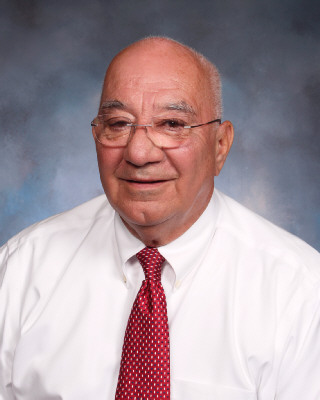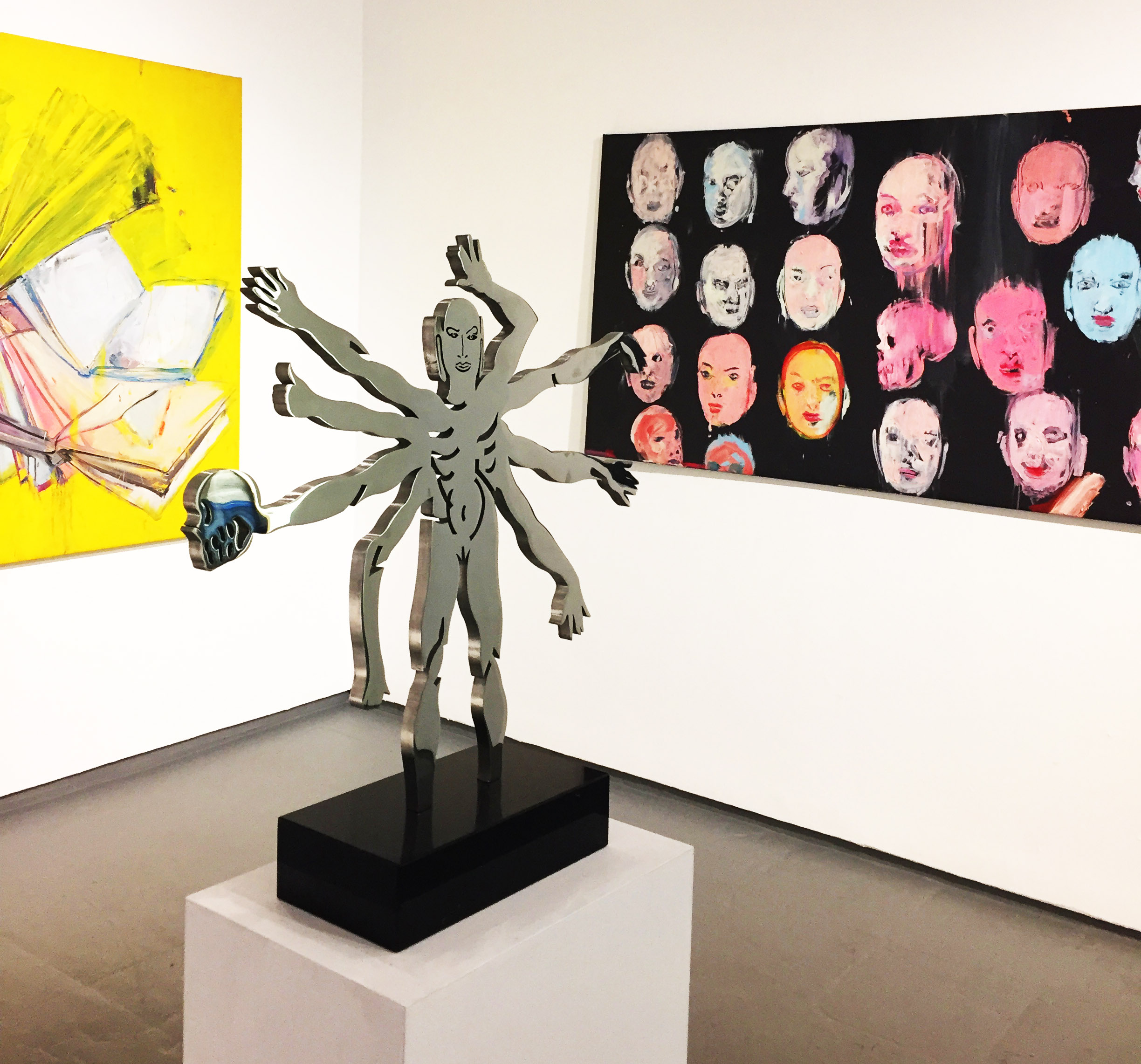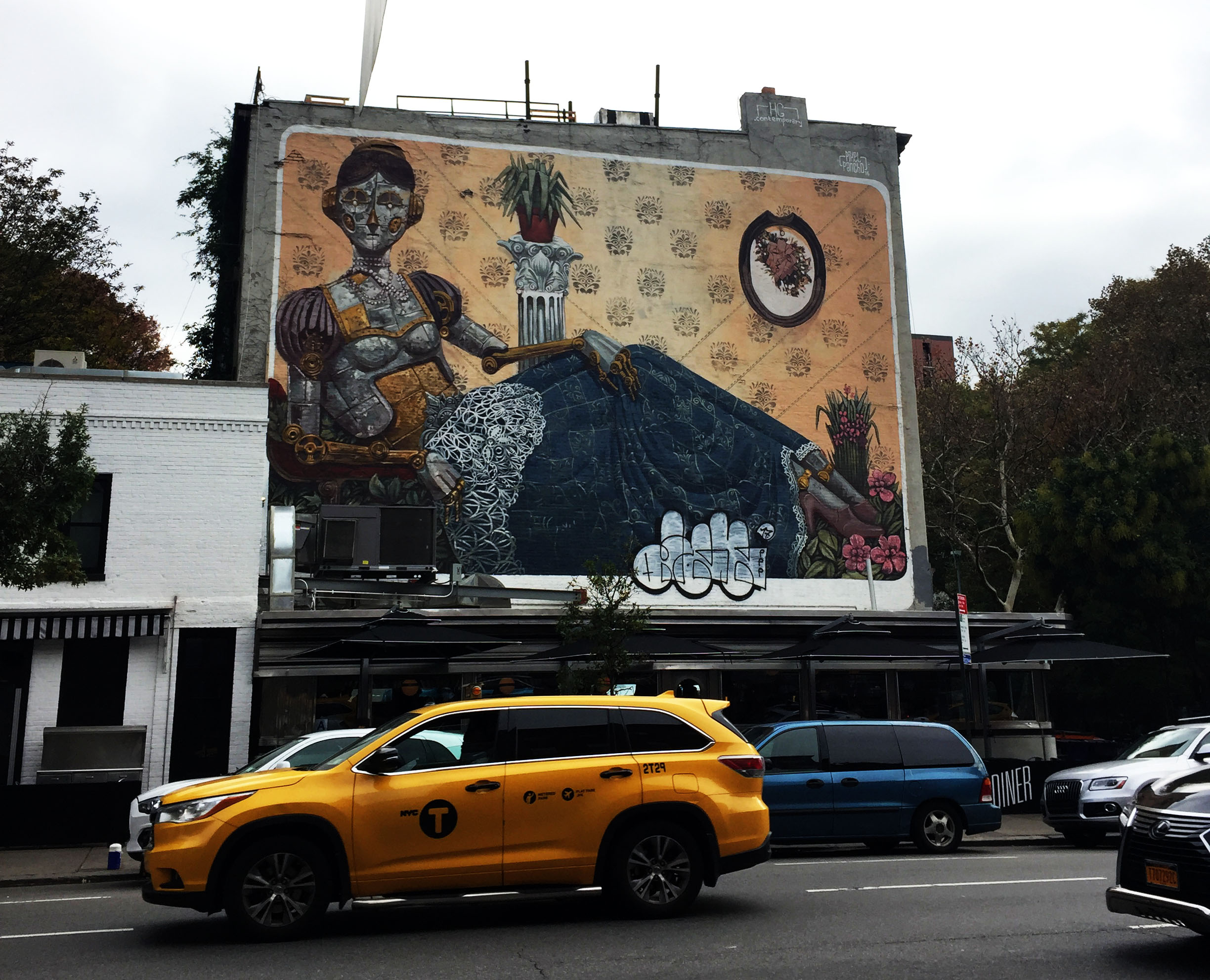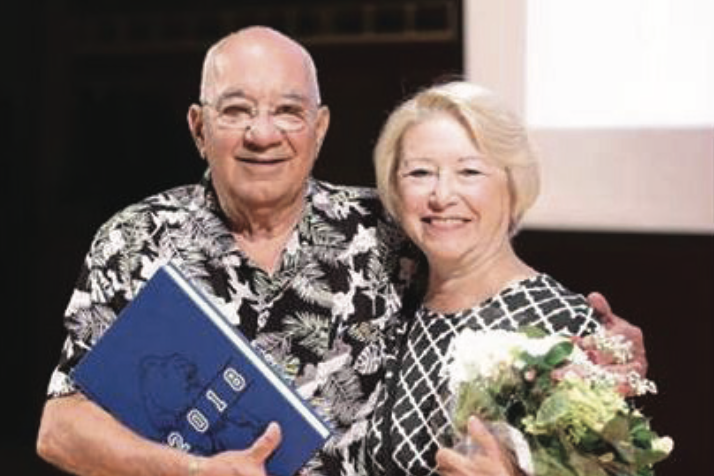
Jun 10, 2018 | Faculty + Staff, Featured
by Darlene Fung (V)
After 41 years of teaching Spanish, coaching, and running the annual holiday can drive at Pingry, Señor Victor Nazario is retiring.
Teaching and education have always been a part of Sr. Nazario’s life. “Academics has always been in my house,” he said. “We didn’t have a TV, so my grandfather read all the classics to me”. He also grew up with three aunts, all of whom were teachers, and in school, he always helped his classmates with their Spanish work.
Before coming to Pingry, Sr. Nazario taught, coached, and worked in a department store all at once. One day at the department store, he met Bill Lionetti, former head of Pingry’s language department, who mentioned that Pingry was looking for a Spanish teacher. Mr. Leonetti invited Sr. Nazario to his house to chat, and then introduced Sr. Nazario to the headmaster, Mr. Cunningham, who eventually hired him.
In addition to teaching and coaching, Sr. Nazario has also contributed greatly to the Pingry community through his annual holiday can drive. This past year, the Upper School raised over 1,000 pounds of cans this year, far more than ever raised before. Sr. Nazario started doing the can drive during his second year at Pingry. As he explains his involvement, “The assistant head of the school came to me and said ‘Vic, I think you can take care of this’, and that was it”.
He then met Ms. Rosa Floyd, who collected all the donated cans at her organization in Elizabeth, NJ, and became his role model for the years to come. Sr. Nazario said, “Everyone should have a Rosa Floyd in their life. She always gave, without asking for anything. Towards the end, she was using money that should have gone towards her medication, and giving it to those she said needed it more.” With Ms. Floyd as his example, Sr. Nazario was never fixated on number of cans he wanted people to donate. “I just wanted to give and help as many people as possible,” he said.
One piece of advice from his years of teaching that Sr. Nazario would like to give Pingry students and faculty alike is to follow your passions. He says, “You must love what you do, but you cannot make that thing the only aspect of your life. You should make it the central pole around which you build the rest of your life”.
One of Sr. Nazario’s favorite parts about teaching at Pingry is the camaraderie between the teachers in the language department. “We’re always trying to tickle ideas and see what we can done using our creativity,” he said.
Along with his fellow language teachers, Sr. Nazario will also greatly miss the students, who challenge and bring him joy every day.
“To tell you the truth, he said, “the kids are what I am going to miss the most from Pingry.”
Mar 25, 2018 | Featured
By Zach Trichas (V)
The Foreign Affairs Club is new to Pingry this year, founded in the fall by Aditya Gollapudi (V), Jackson Lubke (V), Kevin Ma (V), and Varun Seetamraju (V). The club aims to educate students about foreign conflicts, issues, and developments that are covered less frequently in the news due to the fact that they do not necessarily concern the United States. Every week, the club has a member present on a topic relating to international affairs. Each presentation is followed by a discussion.
Lubke says that the structure of the Foreign Affairs Club was inspired by Journal Club. He co-founded the club in hopes of “involving students and reaching as many people as possible” in this subject matter. A tenet of Foreign Affairs Club is a strong focus on accuracy regarding the information being reported.
Two of the club’s leaders, Lubke and Seetamraju, were interviewed in further depth about the club:
How did you come up with the idea of the Foreign Affairs Club?
Lubke: The idea for the club came about when the four founders (Aditya Gollapudi, Kevin Ma, Varun Seetamraju, and myself) realized that many Pingry students were unaware of conflicts outside of the United States. We wanted to help people understand the basics of the world outside of their borders.
What makes for a good presentation in your club?
Seetamraju: A good presentation is essentially made up of two parts. Background information for the conflict or situation and then a deep analysis of the current situation, including where the presenter, in their own opinion, sees it going forward. I feel like this format of first explaining how we got to this point in a conflict is crucial as it gives you a sense of the geopolitical atmosphere. After that, we encourage the presenter to give their own analysis on the situation. It’s very easy for someone to do a Google search or read a Wikipedia article on a conflict, so we try to offer a different perspective on top of that to allow people to understand the situation more deeply. Nothing in foreign affairs is black and white. There is always nuance.
How does Foreign Affairs Club differ from other political clubs, such as Pingry Politics?
Lubke: This club is different from other clubs in that it encourages students to actively participate in discussions through a moderated conversation. We emphasize accuracy and correct information in our debates; we aim to be unbiased and ensure that every presentation has a variety of sources from all sides.
Tell us about one presentation you hosted this year that was particularly interesting.
Seetamraju: I think the most unique and, in my opinion, most interesting presentation we hosted this year was our last one, in which Jackson talked about possible conflicts that could erupt in 2018. Usually our presentations go in-depth on one specific topic, but in that presentation, Jackson covered many topics, many that were rather under the radar, and how those skirmishes could explode to a large scale conflicts. For example, I never knew about how weak Pakistan’s defenses were on their nuclear arsenal or how likely a terrorist organization, such as ISIS, could take over.
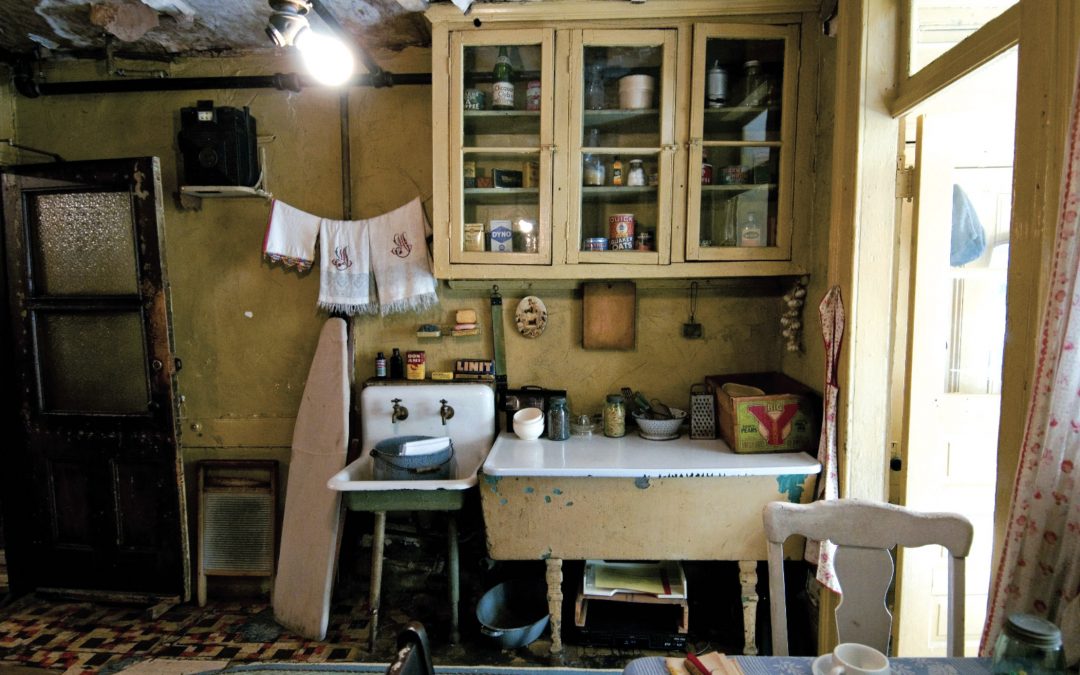
Mar 25, 2018 | Featured, School Trips
By Miro Bergam (V)
On February 9, students enrolled in American Society and Culture, a junior American History class, and American Perspectives, a spring English elective, spent the day visiting the Tenement Museum in the Lower East Side of Manhattan, New York City. The trip was chaperoned by American Perspectives teacher Dr. Anne Dickerson, American Society and Culture teacher Ms. Colleen Kent, and Library Director Mrs. Eileen Hymas.
When the group arrived, they were split into two different tours. Half of the group went on the “Hard Times” tour, where they visited the tenements of the German-Jewish Gumpertz family and Italian-Catholic Baldizzi family. The tour focused on tough economic times for these immigrant families, including stories of how the Gumpertz patriarch abandoned his family during the Panic of 1873 and how the Baldizzis survived an extended period of unemployment during the Great Depression.
The other half of the group attended the “Irish Outsiders” tour, where they studied the Moores, an Irish-Catholic family living in the tenements in the late 19th century. The tour focused on the struggle of celebrating Irish heritage while enduring the prejudice that existed at the time.
“The tour connected really well with the work we are doing in American Perspectives,” said Jeffrey Xiao (V), “where we are currently reading Hungry Hearts by Anzia Yezierska, a short story collection about different immigrants coming to America and living in tenements.”
“Pingry has sent people to the Tenement Museum in the past, but this is Dr. Dickerson’s and my first year chaperoning the trip,” said Ms. Kent, who learned about the museum while visiting with a professional development program she attended last summer. She explained, “I thought it was a great fit for American Society and Culture. Getting to see the conditions of the tenements in real life is much more powerful and is a really good example of experiential education.”
After visiting the museum, the group had lunch at several different local eateries, ranging from a Chinese wonton shop to a small Italian restaurant. “We decided to split up and eat at a few very different places that were all a bit spread out to show off the diversity of the neighborhood that developed around these tenements,” explained Ms. Kent.
At the end of the day, the group reconvened and took the bus back to Pingry. All of the classes that attended the trip discussed the museum experience and how it related to their coursework at their following class meetings. When asked about what she gained from the experience, Lexy Beard (V) said, “It was cool to use the Tenement Museum to connect the modern New York City, a place we all visit very often, with history that we are studying in school.”
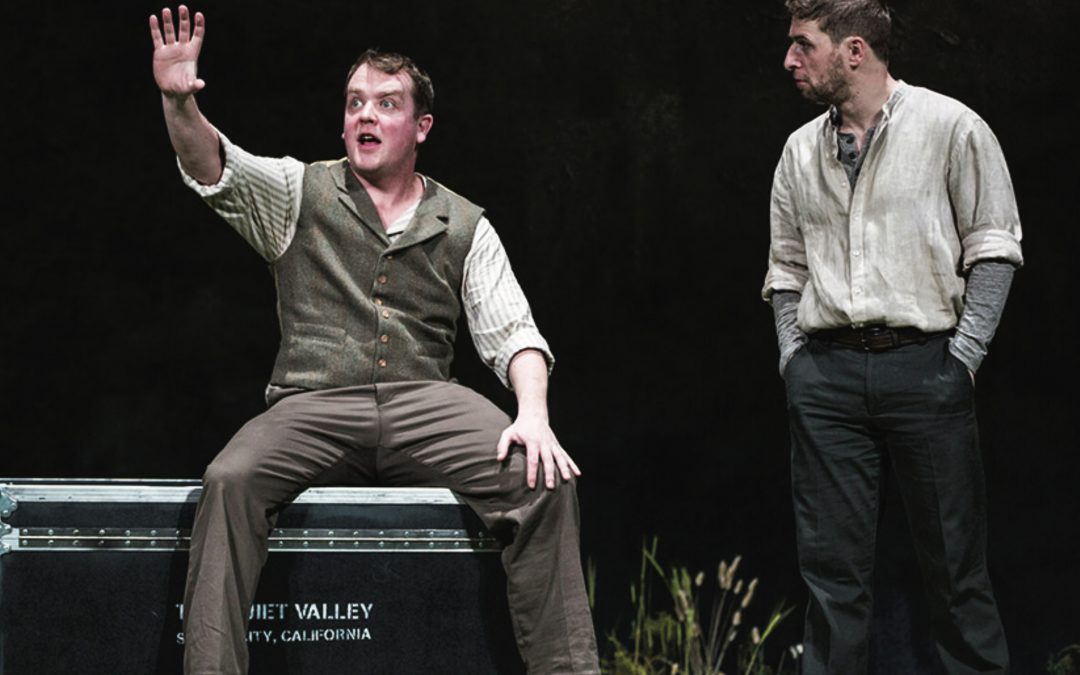
Mar 25, 2018 | Arts, Featured, School Trips
By Brooke Pan (III)
On February 1, the students in the Drama program visited the McCarter Theater to see a live performance of the play Stones in His Pocket by Marie Jones. There, students were captivated by the performance of two actors, Garrett Lombard and Aaron Monaghan, who each played more than ten characters throughout the performance. Though different from a standard play in terms of the number of actors, Ms. Stephanie Romankow, the drama teacher, remarked on the importance of how just two actors “were able to portray such a unique story” by “rearranging their physical roles.”
Stones in His Pocket, set in a rural town in Ireland, tells the story of two friends who are hired to play extras for a movie. In the beginning, the friends are enthralled by the idea of being in a movie; however, as the film carries on, the charm and appeal of life on the silver screen starts to disappear. The play is set in motion when a local townsperson commits suicide from the humiliation he underwent when trying to socialize with one of the movie stars of the film. The two friends and the townspeople are devastated by his passing and are conflicted when the film crew are unwilling to let the extras take time off to attend the townsperson’s funeral. After fully understanding his situation, two friends gain a new perspective, allowing them to recognize the reality of how the film crew’s selfish desires to finish the movie left them uncaring for the people of the town. To try and honor the local townsperson, the two friends try to rewrite a script dedicated to his life. When they present the script to the director of the movie, the director ironically suggests the lack of romance would not appeal to the general audience.
After returning to Pingry, classes reflected on their perspectives of the play. When asked about the most important message of the play, Ms. Romankow emphasized “the importance of extras in life,” suggesting that “no one should be overlooked…. Everyone has their own story.” Ms. Romankow thoroughly enjoyed the trip and is looking forward to more drama field trips.
In addition to the teachers, the students also had their own takes on the show. “Watching seasoned actors perform in a show like Stones in His Pockets really allowed us to see how the skills and techniques we learn in drama are implemented at the professional level,” said Megan Pan (VI). Overall, the field trip to the McCarter Theater offered a unique experience for the drama students, one from which they could learn and grow as a community of actors.
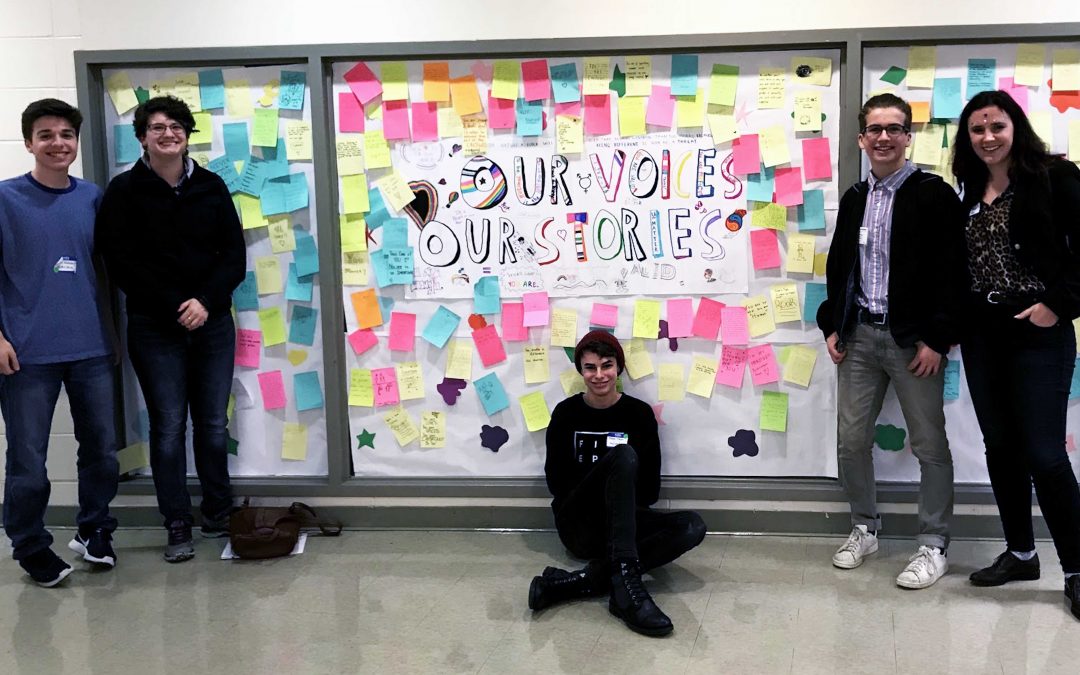
Dec 24, 2017 | Featured
By Miro Bergam ’19
On November 18, Gay-Straight Alliances (GSAs) from high schools across New Jersey met at Montgomery High School for the fourteenth annual New Jersey GSA Forum. The event aimed to connect New Jersey GSAs with local charities and resources, such as GLSEN, HiTOPs, and the ACLU, as well as connect New Jersey GSAs with each other. The theme of the forum this year was “Our Voices, Our Stories.”
Along with Ms. Kathryn Smith, Assistant to the Chair of the Diversity and Inclusion Department and Upper School Latin teacher, and Ms. Stephanie Mygas, Upper School science teacher, the student leaders of Pingry’s GSA attended keynotes and workshops throughout the day to learn about a variety of different topics ranging from privilege to self-care to building a better GSA.
The day began at 9 AM. An impressive showing of over six hundred attendees seated themselves in the central auditorium to mingle and listen to opening remarks. A keynote panel was held, featuring four prominent LGBTQ+ youth leaders in New Jersey. The panelists introduced themselves and answered questions regarding their identities, touching on the event’s overall theme of sharing LGBTQ+ voices and stories.
After the panel, there were three rounds of workshops with a short break for lunch in between. The workshops ranged from the hands-on “Salon,” in which participants learned about and engaged in the queer tradition of drag style and makeup, to the informative “Know Your Rights,” where participants took a deep, analytical look at New Jersey’s protections for LGBTQ+ students.
Other workshops included “HIV: Break the Silence,” which educated attendees on how to protect themselves from HIV, and “The Power of Storytelling,” which gave participants the opportunity to explore the many ways they can share their unique story.
“This was my second year attending the GSA Forum and I can see how it has impacted our students,” said Ms. Smith regarding her experience at the event. She continued, “It allows students to grow as activists and people, and affirms to them that they are part of a community that stretches way beyond their friends and school community.”
Ethan Malzberg (V) said, “The forum was an eye-opening opportunity to learn about the current state of the LGBTQ+ community. It was really insightful to meet so many peers and adults who I can relate to.” Those who attended the event look to bring the information and skills they have gained back to the Pingry community through working with Pingry’s GSA and Diversity and Inclusion Department.
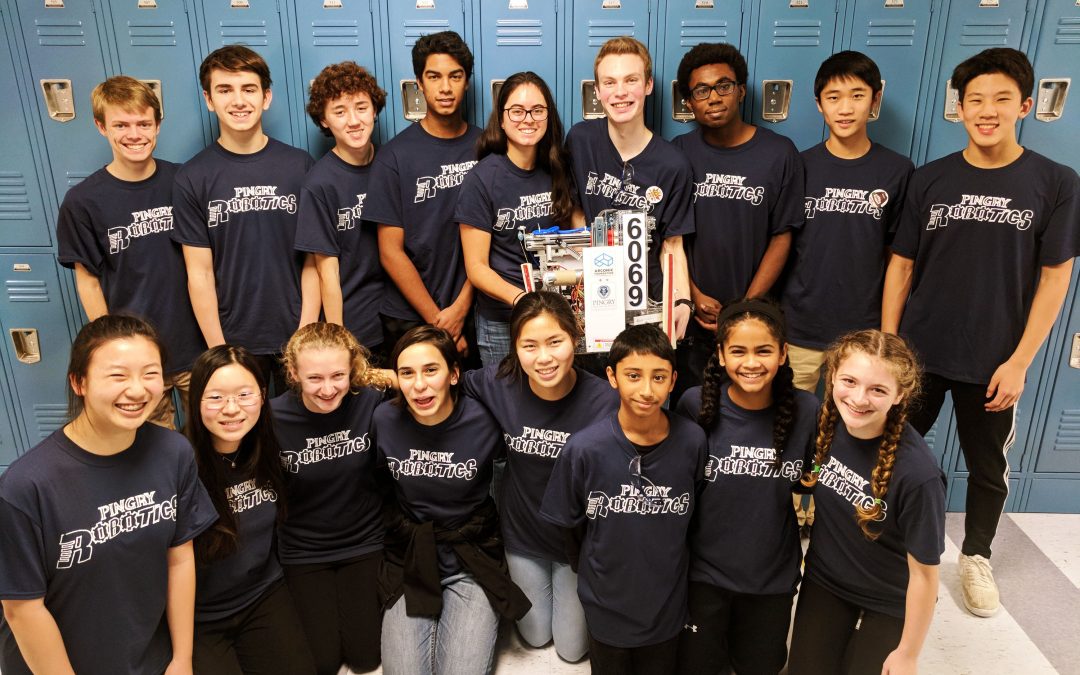
Dec 24, 2017 | Featured
By Noah Bergam ’21
Tucked at the very east end of the school, beyond the cafeteria, below the crossroads of the foreign language wing and arts wing, lies one of Pingry’s best kept secrets—the mysterious, metallic robotics room.
In this legendary room full of power tools, wires, machines, nuts, bolts, computers, and old robots, Pingry’s robotics team has been preparing for its winter season of competition, the First Tech Challenge. Meeting during CPs, athletics, and sometimes after athletics, the team of over 30 students has been creating a notably effective robot in the hopes of qualifying for the New Jersey State Championships, and perhaps even the World Championships later on.
First, some background on how FTC competitions work.
There is a different game played each year. Each game is played by two alliances of two robots. In a game, there is both an autonomous portion, in which robots run on pre-written codes, and a tele-op period, in which drivers control their team’s robot.
There are essentially two rounds at each competition: the qualification round and the alliance tournament round. The qualification round is a series of randomly generated games that, once finished, creates a ranking for all the teams at the competition. The alliance tournament begins once these rankings is determined. The top ranking teams pick two other teams to create their own alliances. The alliances then play in a single-elimination bracket, and the winning alliance wins the competition as a whole and may qualify for the next round of competition (e.g. winning certain regional competitions qualifies a team for States).
The challenge this year is called Relic Recovery, and it mainly involves stacking rows and columns of “glyphs” (foam cube game pieces) in order to get points. Other ways to get points include parking the robot, placing the plastic “relic” in certain “zones,” and balancing the robot on a surface.
Pingry’s team has had a fantastic showing at its tournaments so far. In its first tournament at Bayonne High School, Pingry placed fourth in qualifications and made it to the semifinals of the alliance tournament. Team Captain Alex Strasser (V) said it “was a great success” as an initial showing and that, afterwards, the “biggest things to fix [were] the autonomous, the glyph arm, the relic arm, and a lot more driving practice.”
While the team did not add a working relic arm for the next competition at Central Jersey College Prep, it did have a much more consistent autonomous code and overall driver control that launched the team into fourth place in qualifications once again and ultimately the finals of the alliance bracket. It narrowly lost two out of three games in the series, but the effort by and results from drivers Derek Huffman (IV) and Julian Lee (III) were still very impressive.
Pingry’s most recent competition was on December 10 at Livingston High School, and it was the first state qualifying tournament of the season. They were the second place alliance and came very close to qualifying. Their next tournament is on January 6th. Wish them luck!
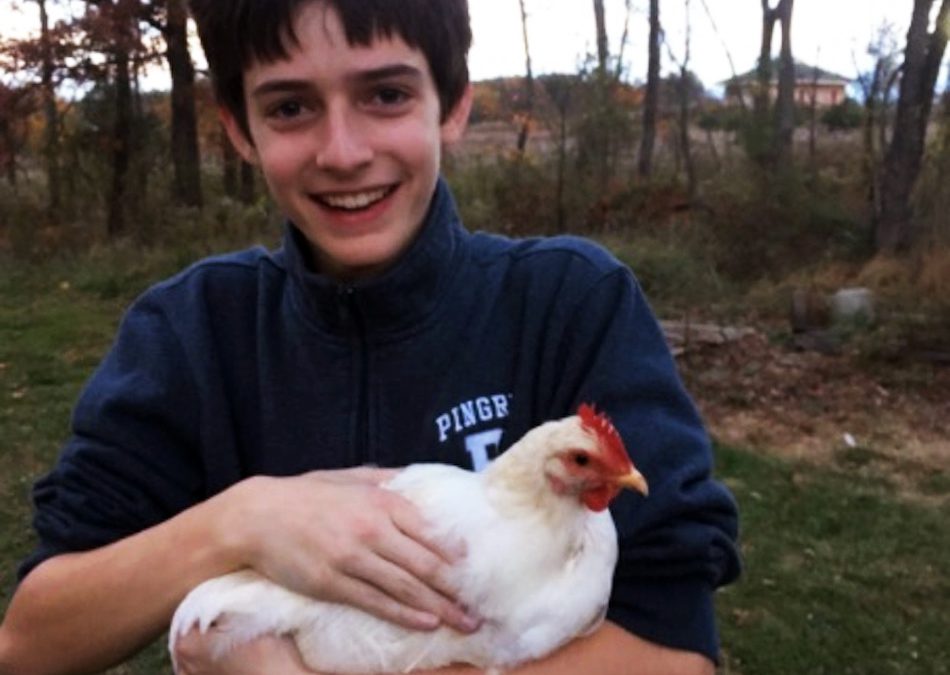
Dec 24, 2017 | Featured, School News
By Ryan Fuentes (VI)
After the introduction of eight chickens to campus this summer, the Farm Team has been working hard to take care of them and make coop improvements over the past several months. As they adapt to their new home and prepare for winter, the chickens have become an important group within the community, both as lovable animals and as tools to teach students about sustainability.
The overall project has been implemented thanks to former art teacher Mr. Delman, who now holds the title of Pingry’s first Sustainability Coordinator. He worked with alumnus and architect Scott Loikits ‘90 to design several projects for a green campus last year, including a farm. The first students to work with the chickens were part of a one-week summer course, “Excursions in a Green World,” in which the students learned about current campus sustainability initiatives.
Led by faculty advisor Ms. Tandon, Farm Team was formed at the beginning of the school year to manage the continued care of the chickens by students. Most recently, it has focused on building a winter coop for the chickens. The previous coop functioned as a place to lay eggs, but the new one also provides a place to perch and rest at night, which is especially important during the winter months.
As far as student-chicken interactions go, Ms. Tandon described how the chickens are friendly and accustomed to working with humans. Among themselves, it may be another story, as they have established a clear pecking order. “Grenda is at the bottom,” noted Ms. Tandon, but she explained that the coop was big enough that each had enough space to prevent real conflict.
Ms. Tandon brought the chickens with her when she moved from Brooklyn, where she first got involved in sustainable farming through volunteering at a local community garden. Now, she is “really interested in teaching students about where food comes from.” The chickens’ eggs have been a feature at the Garden Lunch, which is run by students and faculty.
With the winter coop completed, Farm Team is presently focusing on feeding and managing the chickens. Ms. Tandon sees a lot of potential for the large amount of unused land within the school. In the long term, she hopes not only to expand the coop itself but also to dedicate more fields to growing crops. As Nick Ladino (VI) said, “Farm Team is great. I love going back to nature and taking care of my chickens!”

Dec 24, 2017 | Featured, School News
By Ketaki Tavan ’19
On Wednesday, November 8, Namita Davey (VI) hosted a showing of the film CODE: Debugging the Gender Gap in Hauser Auditorium after school. The event was open to Upper School students and garnered over 15 attendees.
The documentary, as explained on its website, “exposes the dearth of American female and minority software engineers and explores the reasons for this gender gap. CODE raises the question: what would society gain from having more women and minorities code?”
Davey first viewed CODE at the Girls Who Code Summer Program, where she noted that the film was “not only on an important topic, but also really well done in that it highlighted the most important aspects of the issue of the gender gap in tech fields.”
At the summer program, Davey also had the opportunity to attend a question-and-answer session with the film’s director, Robin Hauser Reynolds. During this session, Davey was most impacted by Reynolds’ sharing that what inspired her to make CODE was the fact that her daughter did not have the option to learn computer science in school.
“Many schools don’t have a computer science curriculum because there is a serious lack of computer science teachers,” Davey said. Inspired by CODE’s message and execution, Davey sought to bring it to Pingry.
When asked what effect she hoped CODE would have on the Pingry community, Davey said, “For students, especially females, I hoped that it would make the subject and field of computer science less intimidating. It’s often seen as a ‘man’s’ field, and I think the movie does a really good job of disproving that.” She added, “I hope that showing the movie at school was a step in the direction of dispelling the myth that men are better than women at computer science, and that as a result, more girls will become interested in computer science at Pingry.”
Jackie Chang (VI) attended Davey’s showing of CODE, commenting, “The movie really opened my eyes about the gender gap in the technology industry.” She added that the movie prompted her to consider the gender gap that exists in the broader world as well. “It was inspiring to see both women and men talk about this issue,” Chang said.
When discussing computer science at Pingry, Davey noted, “I am so fortunate to have a female computer science teacher and a class that is split rather evenly in terms of gender distribution.” She then drew the connection that “there are a lot of people in other schools who don’t have this same privilege.” She added, “The movie does a good job of reminding people that the gender gap in tech fields is still a very real problem, popping the Pingry bubble that we sometimes live in.”
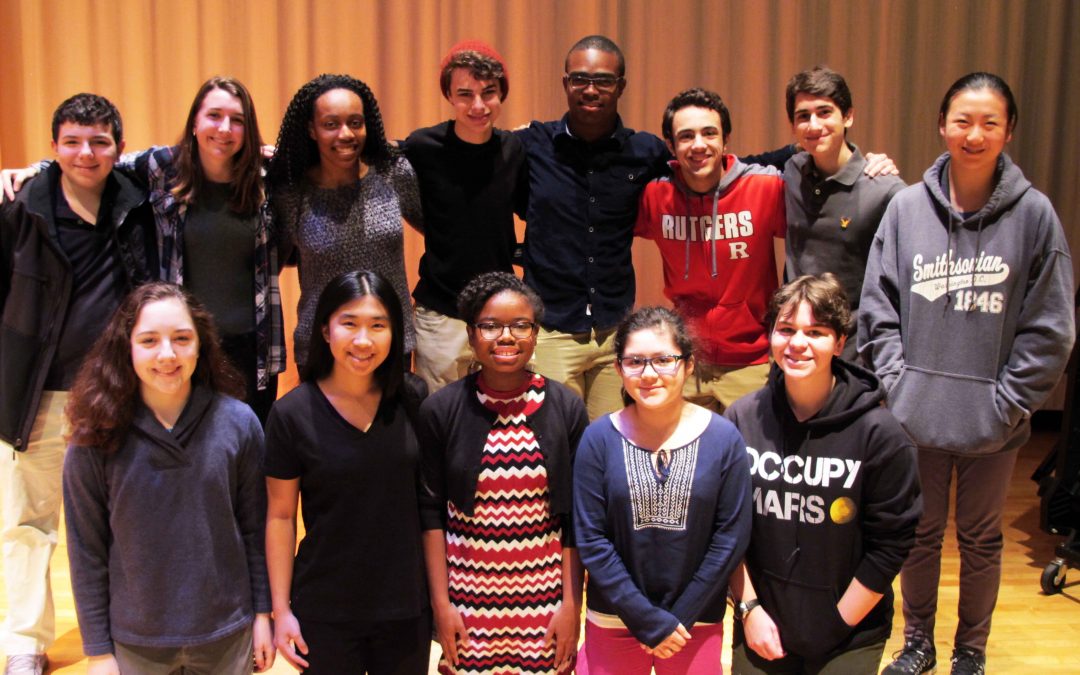
Dec 24, 2017 | Featured
By Kristine Fu ’19
Pingry’s Podcast Club is a new club started by Annaya Baynes (V) and Udochi Emeghara (V) that gives students an opportunity to create an anthological podcast. A podcast is an auditory episodic series ranging from informational talks to audio drama. Audio dramas, which are the podcasts that the club is currently working on, are purely acoustic performances that have no visual components. Baynes described them as “a totally unique way to experience fiction.” The five episode series that the club is currently making draws from the talent of its 15 members who are working together to write a script. According to Baynes, the theme for this anthology is the “folly of humanity.” The club is currently in its voice casting process, and the expected release of this intriguing podcast is early December. In an interview with the club leaders Annaya Baynes and Udochi Emeghara, we learned about the creative process and their current project.
Where did this idea of podcast club come from?
Annaya: I listened to fifty different podcasts this summer and I realized that I can do this! I bought a mic and I researched questions like: How do you write a podcast? How do you write a script? What type of equipment do you need? We have a lot of creative people in our school and we can do it.
What is the story-making process like?
Annaya: It’s ideal to have a smaller club, but it’s also good to see that there are so many of us interested in podcasts. There are roughly 15 of us in a classroom and it gets pretty hectic. You want to make sure that everyone’s voice is heard, but you also don’t want the result to be a jumbled up mess. There’s a lot of yelling and talking over one another, but it’s a very creative process.
What makes recording stories different from writing stories or acting them out?
Annaya: When you are writing for an audio drama, there is an inherent disadvantage because a play is something that an audience can see onstage. There is so much more that can be done with body language. An audio drama has to have the same clarity that you would have with a visual play but still not be telling and not showing.
Udochi: All that audio dramas have is the intonation of the voice, and how you can make people feel a certain way by just the sound of your voice is really really difficult to do.
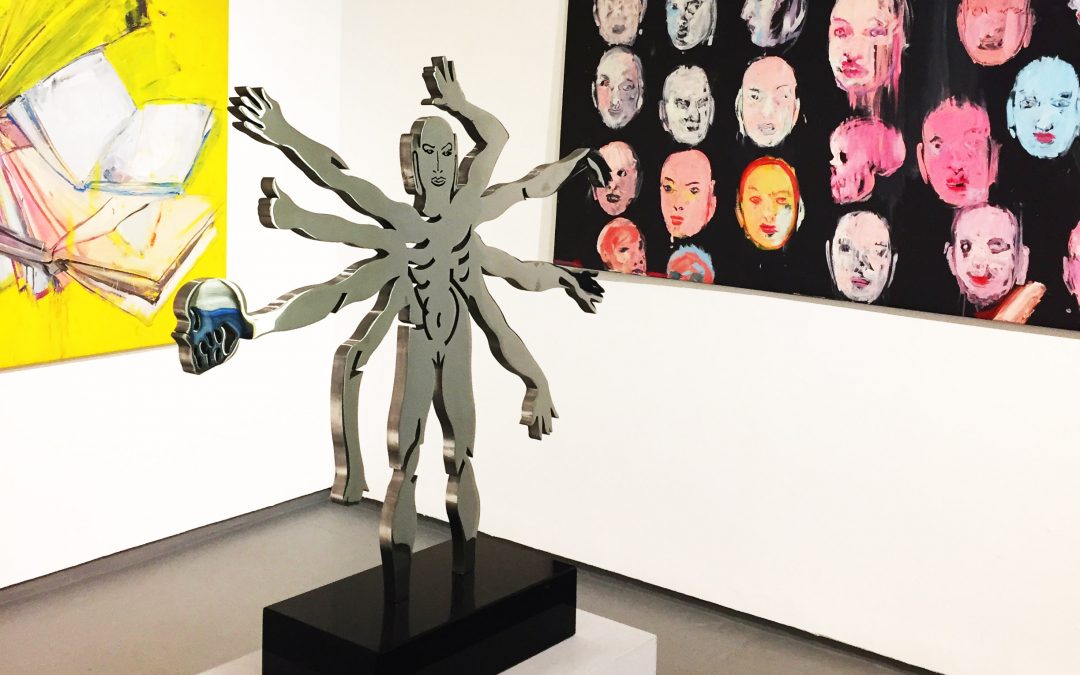
Dec 24, 2017 | Arts, Featured, School Trips
By Mariam Trichas ’18
On Tuesday, November 14th, the photography, portfolio, film, and drawing and painting classes visited the Chelsea Galleries in New York City for their annual gallery trip. They went to many different types of galleries, including ones that specialized in photography, painting, and abstract art, inspiring a variety of different reactions amongst the students.
One of the more abstract art galleries the students visited was the Paul Kasmin Gallery, which showcased Lee Krasner’s Umber Paintings. Many students commented that these paintings, which looked like random brush strokes, reminded them of Jackson Pollock’s paintings. They later learned that Lee Krasner was actually Jackson Pollock’s wife.
Another gallery had wooden floors and a variety of suspended sculptures, along with green fuzz-looking material; it looked like a forest of abstract art. Other interesting galleries included one in which there was a gigantic beard suspended in the air, another with a variety of rotating furniture items, and one in which there were photographs of crumpled pieces of paper.
“This was my second time going on the Chelsea trip, and even though we didn’t see as many galleries as last year due to a traffic jam that caused the buses to be delayed, it was still nice to walk around the city and see the variety of artwork,” said Jewell Strickland (VI) of the experience. “My favorite part was probably going to Eataly.” She added that her favorite gallery was the one with suspended sculptures that looked like a forest.
During the gallery trip, students were given the assignment of taking three photos of art that they liked, three they were confused by, and one they would “gift” to a friend.
After visiting different galleries for around two hours, the students then boarded their buses to Eataly NYC Flatiron, which is always one of the students’ favorite parts of the trip. There, they lined up at the variety of cafes and counters for pizza, pasta, and other Italian foods and desserts. At school the next day, the classes continued discussions about the gallery artwork as well as artwork they may have been confused by during their art classes.
Overall, the gallery trip to Chelsea was a success, much enjoyed by those who went.

